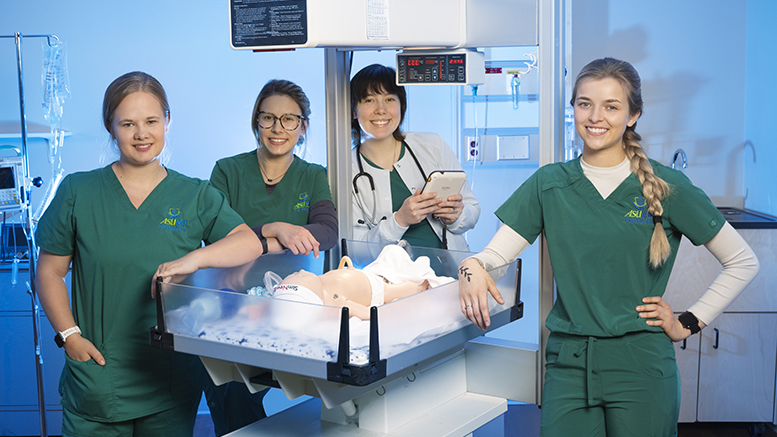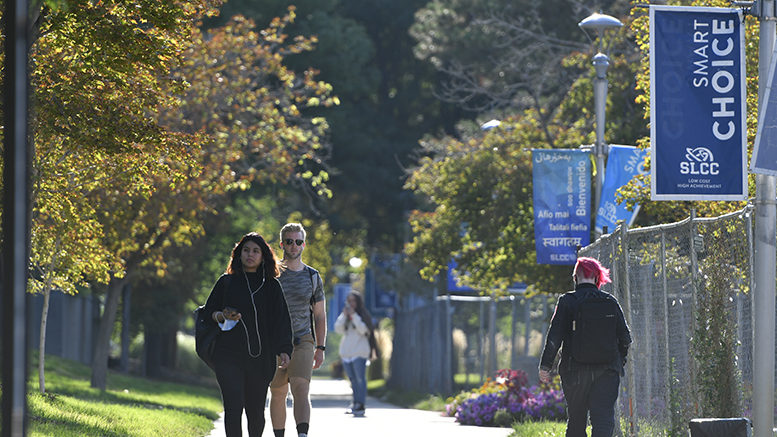Anecdotal reports from some community colleges across the country show hopeful signs that perhaps draconian drops in enrollment during the Covid pandemic may be coming to an end.
Community colleges have amped up efforts to encourage students to stay and return to their campuses, from directly calling individual students, to offering waivers to attend tuition-free. But college leaders are aware of the challenges their students continue to face, such as childcare, housing and transportation. Adding to the mix: a red-hot job market that has students opting to work instead of going to college. Uncertainty over inflation, which is driving up basic living costs, also has students leaning toward work.
Still, community colleges keep trying new ways to connect with potential and current students. For example, Salt Lake Community College (SLCC) students can now take a snapshot of a QR code that drops them into a Zoom room with a counselor and advisor.
“We realized that we have to meet students where they are, and that isn’t always on campus anymore,” said Ryan Farley, SLCC’s associate vice president of enrollment management. The Utah college also now uses a 24/7 chatbot to ensure that students can get accurate information and offer academic advising in the evenings.
Related article: October 11 is the deadline for colleges to apply for grants through the U.S. Education Department’s just-announced College Completion Fund for Postsecondary Student Success. More details are available in the Federal Register.
Another change that SLCC has made over the past few years is to cater more to Latinx families, a growing demographic in Salt Lake County. The college has launched a Spanish-language-only application and admissions portal. Farley points out that this helps all family members read information as students make enrollment decisions.
SLCC has more broadly promoted its various programs to help disadvantaged students, such as free public transportation and a food pantry. If students qualify, they also provide emergency aid.
At Arkansas State University-Mountain Home (ASUMH), Chancellor Robin Myers expects enrollment numbers to be at or above last fall’s enrollment. That’s partly thanks to changes in student services that focus on enrollment. This summer, the college hired faculty to work part-time with a new onboarding specialist. When the college receives an application, the onboarding specialist contacts that student, determines the student’s intentions, and then turns the student over to a faculty advisor.
“Instead of waiting until a normal registration pool time to do this, we’re able to provide individual service. It seems to be turning out very well for us,” Myers said. “We believe our conversion rate (for this fall) will be much higher.”
Emphasis on job training
The booming economy might keep potential students solely in the job market instead of enrolling in college, but it also presents opportunities. For example, colleges can offer workforce training for companies, a growing number of whom are helping with the costs.
“There are more potential adult learners who have tuition help,” SLCC’s Farley said.

Myers notes that he sees some impact on enrollment from ASUMH’s evolving partnerships with industry, such as with Baxter Regional Medical Center. The healthcare facility provides tuition, fees and other costs for students in the college’s licensed practical nurse, registered nurse or paramedic programs. Moreover, the center pays them $500 a month while in college and guarantees them a job when they graduate.
“This is driving a lot of interest in those programs,” Myers said. “Although there hasn’t been an increase in registering for these programs yet, the prerequisite courses students must take before signing up for them in the spring are filling up.”
Joe Gilgour, president of Mineral Area College (MAC) in Missouri, reports that summer enrollments are down slightly compared to last year. But, he expects an increase in enrollment this fall due to the expansion of the college’s service area and new programs. It is opening a new campus in Cape Girardeau this fall, a move that should bring in about 200 students, he said.
MAC also has expanded from offering a core of general education for transfer degrees to courses in the career technical area. The expansion includes welding, which it is offering this summer, and an HVAC program starting this fall. Starting in fall 2023, the college will hold these courses in an 80,000-square-foot technical building now under construction. The facility will also house new programs like machine tools, fiber optics and construction management. In addition, the college is offering training for phlebotomists, certified nursing assistants, community health workers and paramedics.
Gilgour noted that the building and program expansion are responses to local industries’ needs.
“All our local industries are telling us they need dozens of employees trained right now,” he said. “And so, we’re working as fast as we can to get those training opportunities. It’s changing the face of the college being primarily a transfer institution … to a comprehensive community college.”
Improved enrollment outreach
This time last year, one big challenge for ASUMH was enrollment outreach to high school students. Now that high schools are back to in-person classes, counselors can interact with students much differently than they did the previous year.
The college has instituted new student orientations throughout the summer. These sessions allow new students to come on campus, which did not happen during the pandemic. Myers noted that an upcoming session had more students signed up than for any other orientation program they have held, even pre-pandemic.
“We’re seeing that students want to reengage, and they are coming out in person to get information,” he said.
MAC hired an enrollment manager, which it did not have before, to find the most effective ways to communicate with prospective students of all ages. MAC, which also is visiting high schools to contact students earlier than in the past, boosted its admissions department with more recruiters. And it has revamped its dual-credit option.
“(Dual credit is) a portal to students coming to college,” Gilgour said. “With more dual-credit students, we will get more students when they graduate high school.”
The pandemic has disrupted all types of students’ education and exacerbated the challenges they face. But college leaders note that it has also provided an opportunity to be innovative and to develop ways to better serve all students, especially those from underrepresented populations.
“There’s never been a time here at the community college where enrollment is priority number one,” said SLCC’s Farley. “I’ve seen (so much) interest and engagement from both the student affairs and the academic affairs side. There is an openness to try new ideas and new things that maybe in the past we were a little more conservative.”

